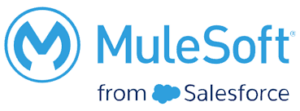The MuleSoft API: Integrating Applications, Systems, and Devices
 One of our customers, a manufacturing company in Cleveland, hired Work Horse to connect their older systems with newer technology. The company uses a combination of on-premise software and cloud applications (SaaS). Initially, they automated simple data transfers. Eventually, they adopted APIs — which are like digital bridges — to enable smooth communication between applications. In this post, we’ll explore their journey and explain how we used the MuleSoft API (by Salesforce) to boost efficiency and future-proof their systems.
One of our customers, a manufacturing company in Cleveland, hired Work Horse to connect their older systems with newer technology. The company uses a combination of on-premise software and cloud applications (SaaS). Initially, they automated simple data transfers. Eventually, they adopted APIs — which are like digital bridges — to enable smooth communication between applications. In this post, we’ll explore their journey and explain how we used the MuleSoft API (by Salesforce) to boost efficiency and future-proof their systems.
Why We Use MuleSoft for Process Automation
We’ve worked with this manufacturing company for about 18 years, initially connecting their legacy AS/400 system to their website. Originally, they used PHP and MySQL to access AS/400 data. As their business expanded, they needed to expose more data and build robust integrations between applications.
We recommended the MuleSoft API, a tool designed to simplify system integration. First, we rewrote their PHP interface with Mule 3, enabling real-time updates as data changed. We also set up simple import tasks for additional information like zip codes and salesperson data.
Later, we implemented services to securely import payroll hours and vacation data from Paycom using SFTP. During this time, we upgraded to Mule 4, giving them access to advanced features.
As the company expanded, they added services such as syncing data with SugarCRM and managing documents through workflows. They used a single Mule application successfully for several years. However, with growth came the need for a major upgrade.
A Major Upgrade for an AI Future

Over the past year, we redesigned the MuleSoft environment to enhance flexibility, reliability, and readiness for future technology, including AI.
One significant change involved replacing their single Mule application with six smaller, focused applications. This improved ease of management and overall performance. Impressively, we completed this major overhaul in under 200 hours.
Now, APIs handle all system communications, simplifying data sharing between applications and enhancing scalability. These updates position the company for continued growth and technological adaptation.
The Right Tools for the API Management Job
Job cost mattered greatly to this manufacturing client. We ensured they avoided expensive enterprise software. MuleSoft’s Community Edition (CE) provided essential functionality without added costs. Upgrading to the enterprise version in the future remains an easy option.
We also introduced other valuable tools:
- ActiveMQ for messaging between systems
- LDAP for enhanced security
- DataDog for monitoring performance
Additionally, we integrated key systems like BPCS (AS/400), SugarCRM, OnBase (for document management), Paycom (for payroll), and MySQL
MuleSoft Integration: Bringing It All Together
Integrating systems might seem complex, but the right technology simplifies the process. MuleSoft enables our customer to maintain older systems while connecting them with new technologies. As businesses move toward AI and other innovations, seamless system communication becomes increasingly vital. Often, you don’t need to replace trusted legacy systems; you simply provide them with the right interfaces to interact effectively with modern applications.

